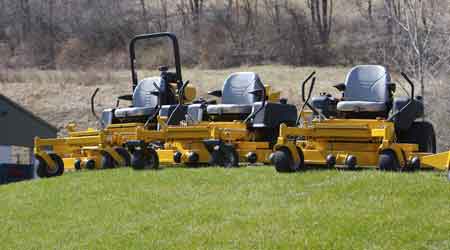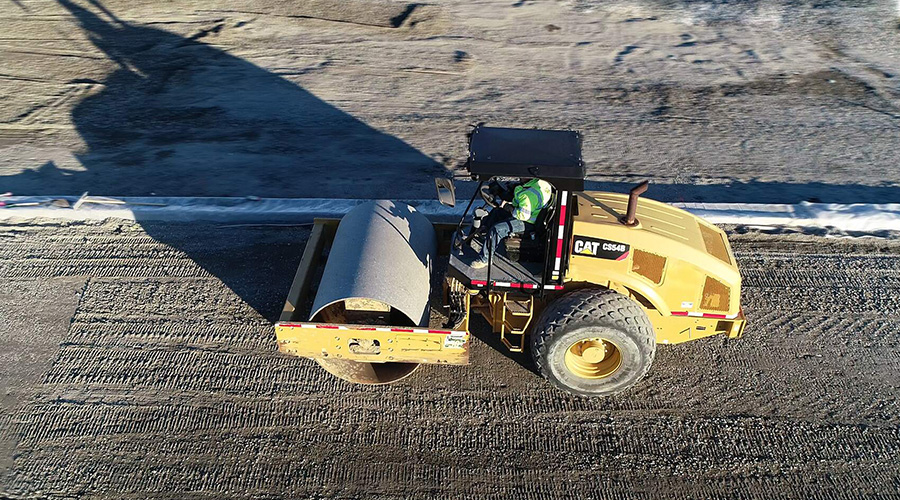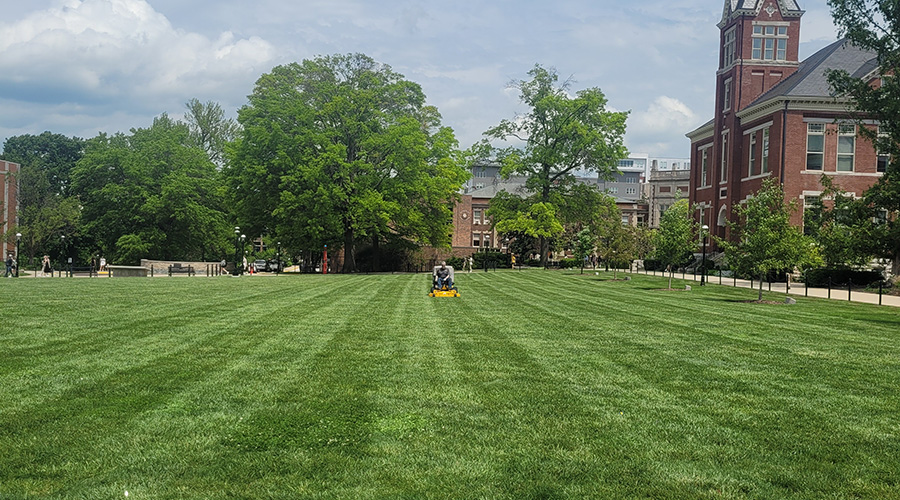Attachments, Power Sources, Stand-On Models Maximize Mower Versatility
Part 1 of a 3-part article on mowers
Turf areas are often the highest-profile areas of landscapes for institutional and commercial facilities, and keeping turf looking its best is the most important task that grounds departments carry out. For these reasons, commercial mowers are essential tools in the equipment arsenals of most departments.
But in these days of financial and staffing challenges, mowing is not enough. In response to demands from customers, manufacturers have made important changes to the latest generation of mowers related to greater versatility and enhanced performance. By understanding changes in key product areas, managers can make smarter, more cost-conscious specification decisions.
Propane- and gasoline-powered mowers remain popular options for managers, mechanics and operators. Yet despite their popularity, electric-powered mowers have seen many technology advances and are the future for the commercial landscaping industry. Large manufacturers are working to create efficient and powerful battery-powered mowers that can handle the types of jobs departments perform daily.
Managers should be aware that battery-powered mowers have not been on the market long enough to prove their long-term durability or performance. A mower’s efficiency depends on the length of time the battery can last, and battery-powered mowers typically run on lithium batteries, which do not provide a warning before they run out.
This situation makes it even more critical for operators to track the time they have been using the battery and to make sure they have a backup battery on hand. Operators do not want to get stuck with a dead battery and face a long walk back to get its replacement.
Another factor that contributes to an electric mower’s efficiency is battery power. The rule is that the higher the voltage, the more amps it burns, which decreases its endurance. This means for many departments that carry out multiple jobs a day, electric equipment might not be a financially sound investment. A battery-powered mower can last anywhere from 35-40 minutes without changing its batteries. That is fine for residential landscaping but not for commercial use.
Financially speaking, battery-powered mowers are less expensive in the long term, compared to propane- and gasoline-powered mowers. Since managers need to factor in the cost of batteries in addition to the mower upfront, it might seem as though battery-powered mowers are more expensive. But factoring in the cost of fuel, gasoline-powered mowers actually cost more in the long run. As a result, the return on investment is greater with an electric mower.
In addition to the lower costs associated with battery-powered mowers, managers also need to consider the environmental impact. Because of their zero-carbon footprints, battery-powered mowers are becoming an attractive option for managers whose facilities are LEED certified. To retain LEED certification for their facilities, organizations must implement green-friendly practices, including landscaping methods. Even if an organization does not have LEED-certified buildings, battery-powered mowers are an effective way to increase the safety of mower operators and protect the surrounding environment.
For example, states such as California, Georgia, and Texas have regulations banning the use of gasoline-powered equipment on certain days due to the ozone levels and temperature. The nitrous oxide and volatile organic compounds that contribute to the formation of ozone are commonly produced by motor vehicle engines, electric generation units, industrial facilities, and landscaping equipment.
Grounds crews can use propane equipment, but there are many risks associated with handling oil and gas in these types of conditions, so the development of electricity-powered mowers will help increase the overall safety of the operators and the environment.
The advances manufacturers have made in handheld battery-powered tools are a great indicator of the future for mowers. There are hundreds of affordable tools on the market today, and many departments and commercial landscapers have switched to using electric tools, including blowers, hedge trimmers, chainsaws, and pole saws. The battery life on these types of equipment is equivalent to that of gasoline, but operators need to keep enough batteries on hand to last throughout the day.
Related Topics:















